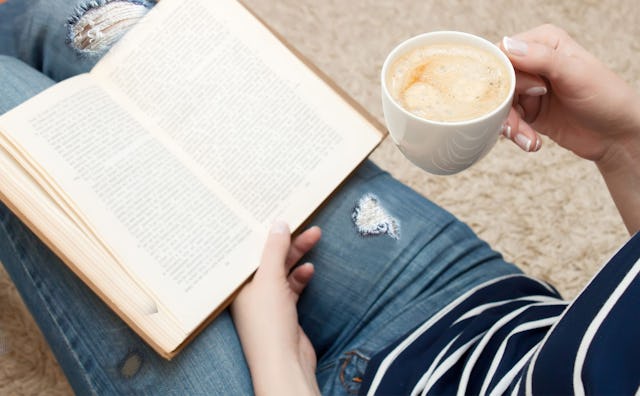My Almost Midlife Crisis

This November, I turned 46. I felt fat, unfocused and droopy. I woke up panicked and confused precisely at 1:24 a.m., and stayed awake, thinking I heard someone downstairs repeatedly playing one note on the piano for hours. My hair wouldn’t behave. I misplaced my sense of humor. For the first time in my life, I felt like an adult. I wasn’t a big fan of the feeling.
Cue my birthday. Woke up to children and husband singing, plying me with gifts and kisses. Hurrah! 46 can be fun! I spent the day in typical 2015 fashion: checking Facebook. Messages from friends, family, coworkers and headhunters I had accidentally accepted as friends came pouring in. My past rose up to greet me in a chorus of good wishes.
Strangely enough, I didn’t feel the weight of all the years it had taken to accumulate all of these people, or even get a sense of the time that had passed. It was just a feeling of more—more people in my life than ever before, more memories, more experience, more love—more everything. A vague concept washed over me, looking for words. “Time has given me space to accommodate more of everything in my life,” is the best I could come up with. “I’m not old, I’m just experienced.” I understood that cliché for the first time.
In addition to the words and wishes, there were photos. Three in particular. My sister posted a baby photo of me looking longingly into a pastry shop window. Obsessed with baked goods at a young age—if nothing, I am consistent. I do that to this day.
My old middle school friend photographed a page from an old notebook where she had asked me to transcribe a poem I wrote. My first commissioned writing job! I didn’t remember the moment, but I still remember the poem by heart.
And my longtime roommate posted a photo of my 26th birthday dinner. I looked good. I looked like I felt good. Curly-haired, tanned, no makeup, big earrings, bigger smile. I never finished the food on my plate. I read every day. I wore ripped jeans and comfortable shoes. That was a good version of me. I showed the photo to my family. My husband’s reaction: “That’s what you looked like when we met!” My 13-year-old daughter: “Oh, Mommy, that’s what you looked like in your wedding pictures. Pretty!” My 8-year-old son: “Who is that?”
© Courtesy Cara Stevens
Though the years had busily flown by unnoticed by me, I had traveled far in 20 years. However the road got me there, I wasn’t happy with what I saw in the mirror on my 46th birthday. I was starting to look and feel my age and decided I would have none of that. The day after my birthday, busy with work, kids, housework and the minute details of everyday life, my conscious brain forgot all about my resolution. But the part of me that didn’t forget led me to take steps over the next couple of months, secretly, to carry out that plan behind my own back.
I began to reconnect with friends who I truly felt connected to and stopped worrying about people whose negative opinions of me didn’t matter. I stopped checking Facebook hourly and started having more face time with family. I read more, snacked less and cleared the way for a spring garden. We jumped on the bed, hunted for sea glass and dirtied the kitchen with fizzy, foamy science experiments. We laughed. I smiled. A lot.
Today, almost three months after my birthday, I woke up, grabbed the book I was reading, went to the gym, ate only what I needed for breakfast, washed my newly permed curly hair, put in my hoop earrings, threw on my ripped jeans and scuffed shoes and looked in the mirror. My 26-year-old self stared back at me. Sure, there are a few bags under my eyes, and I still need to lose that baby weight (did I mention my youngest is 8?), but I am also a more confident, more fulfilled version of me at 26, so it’s a worthwhile trade-off.
So my advice to anyone facing a midlife crisis? Pick an age. Any age. And think about what made you your best possible self then. It’s still you, you just may have to dig a little for it. But all that digging is worth it. Your best midlife version of you may just be a buried treasure that only you have a map to.
This article was originally published on